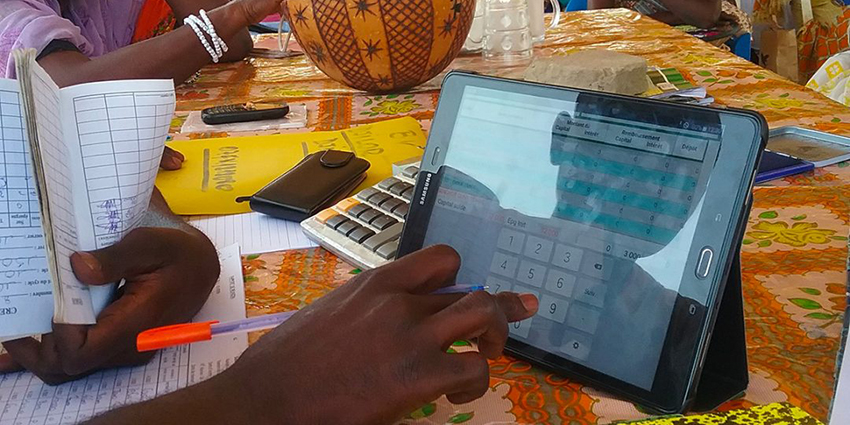
ADA, Inpulse and the Grameen Crédit Agricole Foundation joined forces in 2020 to monitor and analyse the effects of the COVID-19 crisis on their partner microfinance institutions (MFIs) around the world. This monitoring was conducted periodically in 2020 and 2021 so as to get a better view of the development of the crisis worldwide. The conclusions presented in this article follow the last study conducted in November 2021. With this regular analysis, we hope to contribute, at our level, to the charting of strategies and solutions adapted to the needs of our partners, as well as to the dissemination and exchange of information by and between the different stakeholders of the sector.
The results presented here are from the 8th survey in the joint series (1) of ADA, Inpulse and the Grameen Crédit Agricole Foundation. The 70 institutions that responded are located in 39 countries in Eastern Europe and Central Asia (ECA-24%), Sub-Saharan Africa (SSA-38%), Latin America and the Caribbean (LAC-20%), South and Southeast Asia (SSEA-9%), and the Middle East and North Africa (MENA-9%) (2).
1. Despite the recovery in operations, growth is limited by weak demand
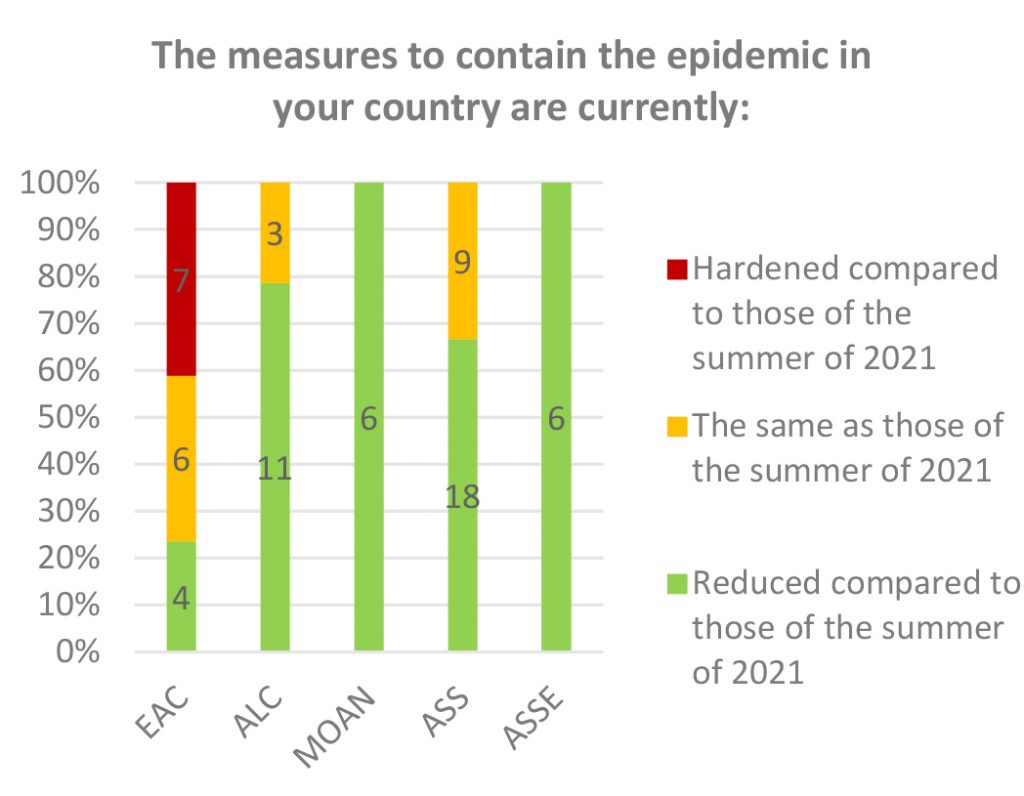 The COVID-19 environment improved substantially for our partner microfinance institutions in the 2nd half of 2021. More specifically, as of November 2021, 64% of them reported that the measures taken to contain the epidemic in their countries had eased compared to those experienced in the summer, and 70% of respondents (49 MFIs) no longer faced COVID-19-related constraints in their operations.
The COVID-19 environment improved substantially for our partner microfinance institutions in the 2nd half of 2021. More specifically, as of November 2021, 64% of them reported that the measures taken to contain the epidemic in their countries had eased compared to those experienced in the summer, and 70% of respondents (49 MFIs) no longer faced COVID-19-related constraints in their operations.
MFIs in Eastern Europe (Bulgaria, Lithuania, Moldova and Romania) stand out as an exception to this dynamic, since some of them (7 MFIs out of 13 in this sub-region) report a hardened context during this period, linked to the resurgence of the epidemic in the region in the last quarter. This is reflected in the difficulties in meeting clients in the field or in branches and therefore in conducting activities in general (collection and disbursement of loans).
It is in this changing context that MFIs have been operating for almost two years now. Although conditions are improving, operational performance has remained below expectations as the surveys continue: 53% of respondents (37 MFIs) report that they have not met their disbursement targets since the beginning of the year. This phenomenon is encountered globally in every region, with the exception of LAC (where most partners are located in Central America).
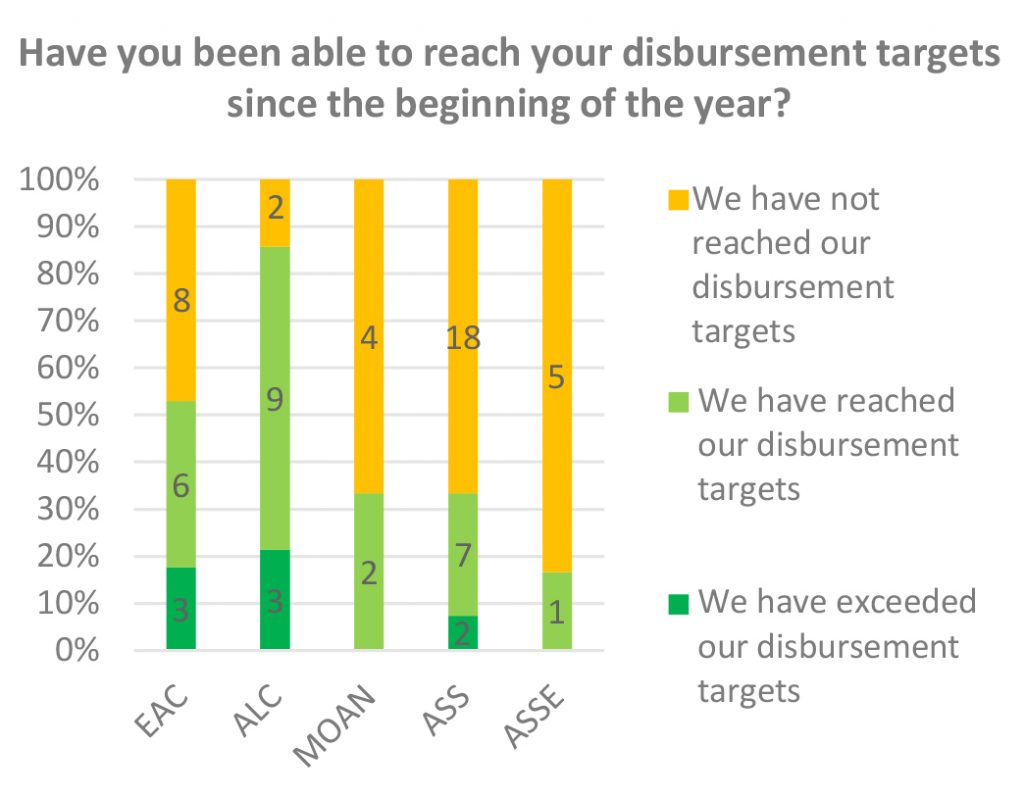 The low levels of disbursements are related first and foremost to difficulties experienced by MFI clients. The two most common reasons given (54% and 49% respectively) for the MFIs that are not growing at the expected levels this year are the deteriorated risk profile of clients and the reluctance of clients to take out new loans. This justification is further confirmed by the fact that 53% of respondents still have a higher risk portfolio than before the crisis. This persistent increase in risk and the situation of a portion of the MFIs’ clients with little or no needs consequently limits the possibilities of MFIs for development.
The low levels of disbursements are related first and foremost to difficulties experienced by MFI clients. The two most common reasons given (54% and 49% respectively) for the MFIs that are not growing at the expected levels this year are the deteriorated risk profile of clients and the reluctance of clients to take out new loans. This justification is further confirmed by the fact that 53% of respondents still have a higher risk portfolio than before the crisis. This persistent increase in risk and the situation of a portion of the MFIs’ clients with little or no needs consequently limits the possibilities of MFIs for development.
2. Digitalization remains the top priority for microfinance institutions
A gradual and contrasting economic recovery notwithstanding, the proactive approach of MFIs to adapt to current and future challenges continues to be demonstrated as the months go by. We have noticed that the crisis has fuelled reflection on strategic issues since its onset. At the end of 2021, 47% of MFIs confirm that the important areas of work for the coming years have emerged with the crisis. Above all, the topics most mentioned at the beginning of the pandemic (product development for agriculture, adaptation of the offer, digitalization) are still at the heart of the directions that partner institutions should take.
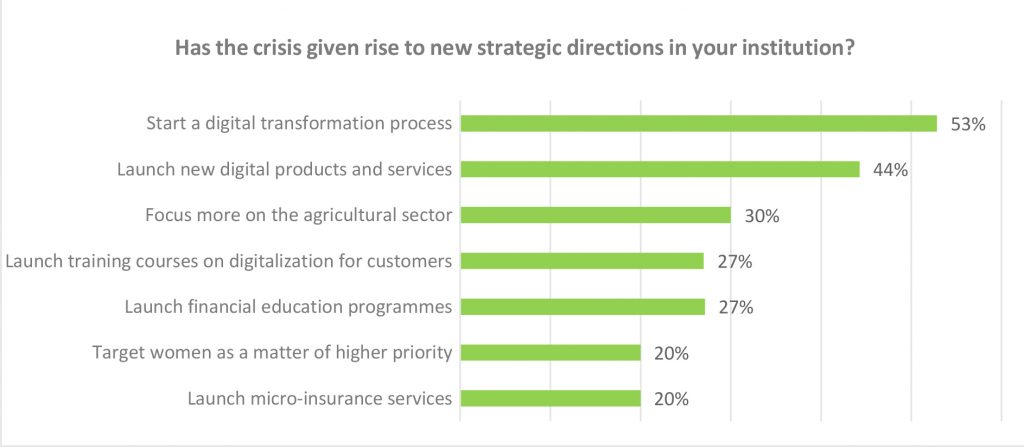
The implementation of (internal and external) digital solutions is considered the main area of development. Digitalization is essential to overcome the difficulties of direct contact with borrowers, a subject that has been highlighted since the beginning of the pandemic. We also note that the appeal of digitalization is found in all regions, but that it is more or less pronounced depending on the size of the MFI: 69% (9 MFIs) of Tier 1 (3) institutions are thinking of launching new digital products and services, while this concerns only 47% (15 MFIs) of Tier 2 and 24% (5 MFIs) of Tier 3 institutions.
The other strategic areas cited are mentioned to a lesser extent. 30% of the respondents nonetheless plan to focus more on the agriculture sector. The responses on this subject do not show a marked correlation either in terms of MFI size or location; only the SSEA region shows a particular interest (67%). This echoes the testimonies we collected a year and a half ago: this sector appeared to be one of the least affected by the COVID-19 crisis. This intention to invest more in the agricultural sector is particularly positive as this sector represents an economic, social and environmental challenge for the years to come.
Finally, another point that stands out among the responses of our partners is the training and awareness-raising of clients on various topics: the use of digital solutions (27%), financial education (27%), health (11%) and environmental protection (11%). While these topics are less popular, they are related to the MFIs’ areas of development mentioned above and highlight the need to support clients so that they can adapt to these changes.
3. The capacity to implement these strategies varies according to the size of the MFIs
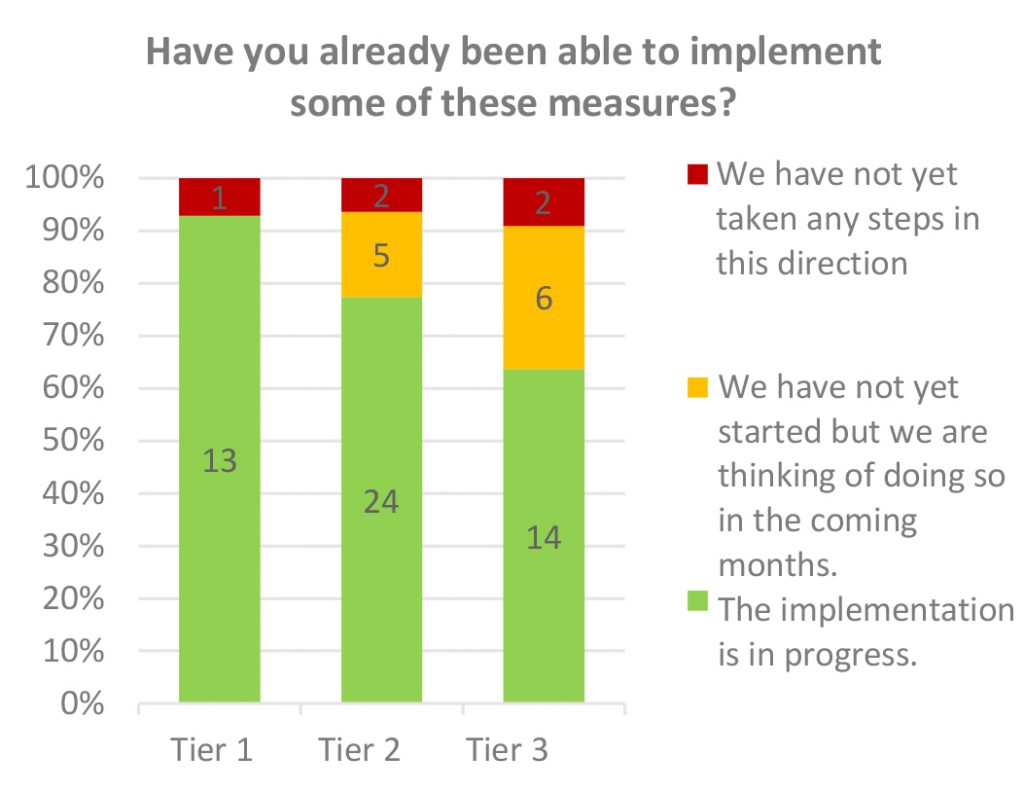 We note that 76% of the MFIs have already started to implement measures related to these strategic lines and 16% plan to launch actions in this direction in the coming months. Thus, only 7% of the sample have less clear perspectives on this point. A certain time lag in the implementation of these measures emerges however, depending on the size of the institutions: the vast majority of Tier 1 MFIs (93%) have already implemented such measures, whereas this proportion drops to 77% for Tier 2 and 64% for Tier 3 MFIs.
We note that 76% of the MFIs have already started to implement measures related to these strategic lines and 16% plan to launch actions in this direction in the coming months. Thus, only 7% of the sample have less clear perspectives on this point. A certain time lag in the implementation of these measures emerges however, depending on the size of the institutions: the vast majority of Tier 1 MFIs (93%) have already implemented such measures, whereas this proportion drops to 77% for Tier 2 and 64% for Tier 3 MFIs.
These differences by MFI size (which we already noted in our 2020 work on the direct consequences of the crisis on MFIs (4)) are also reflected in the level of support expected from external stakeholders (investors, donors, etc.). Whereas technical assistance (69% of responses) and dedicated funding (66%) are the two components that stand out the most for making progress on these issues, they are much more requested by Tiers 2 and 3 MFIs. Similarly, the ECA MFIs are the only ones to show a certain independence on this subject, with a third of the respondents in the zone not stressing any need for support.
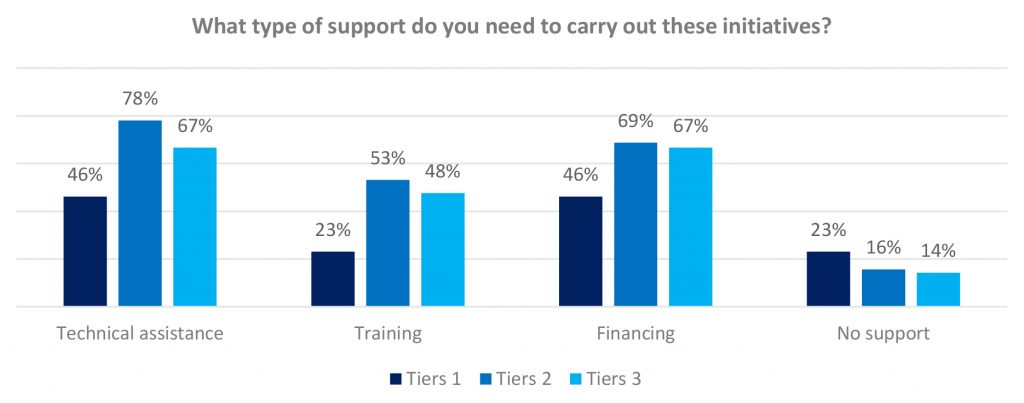
The larger MFIs therefore appear to be better equipped and more autonomous after the crisis to meet their next challenges, as they were at the peak thereof. At the same time, some of the smaller MFIs also confirm strong orientations for the years to come, albeit to a lesser extent. They are no less ambitious even though they have fewer resources.
_____________________________________________